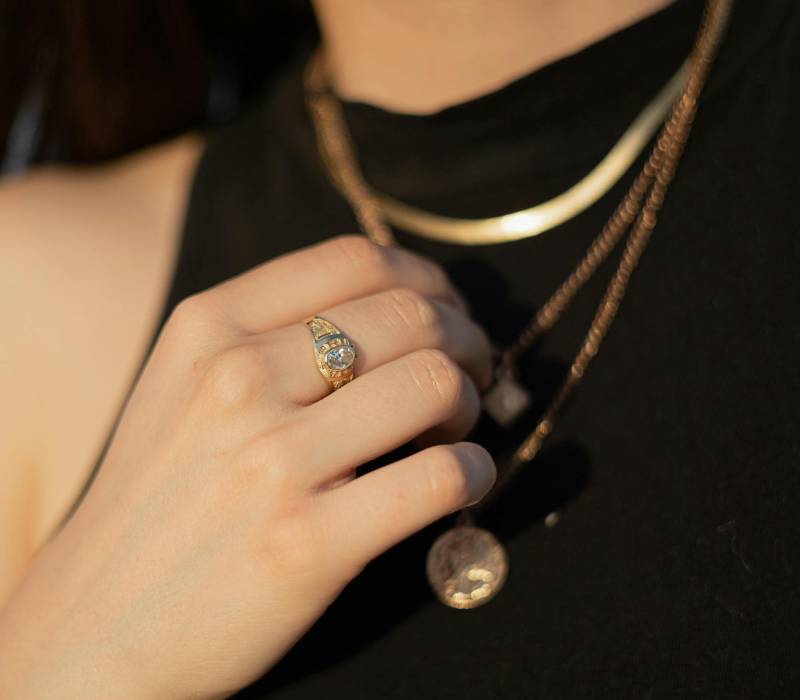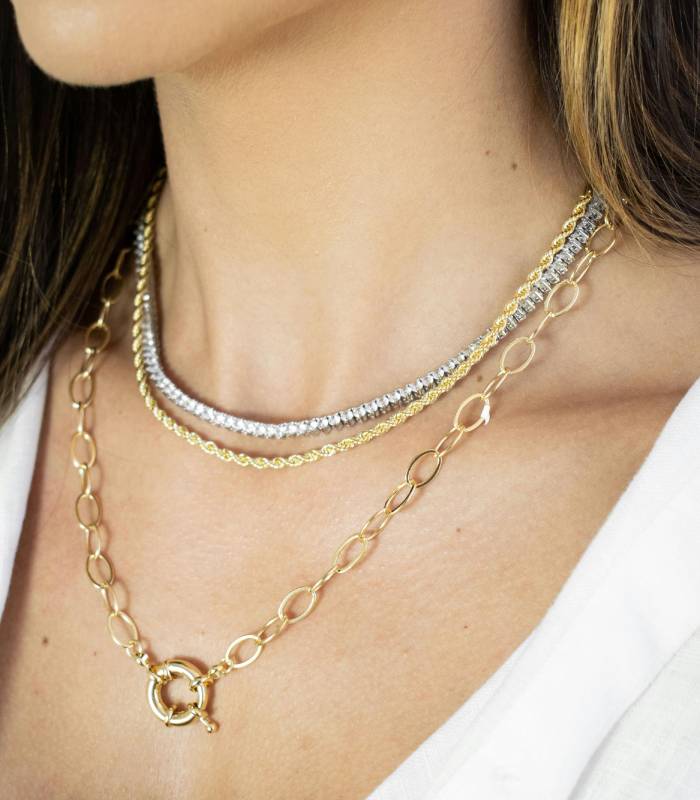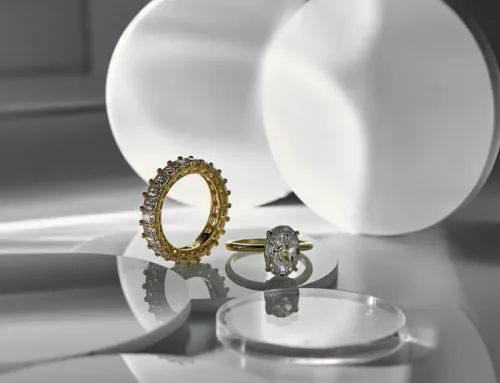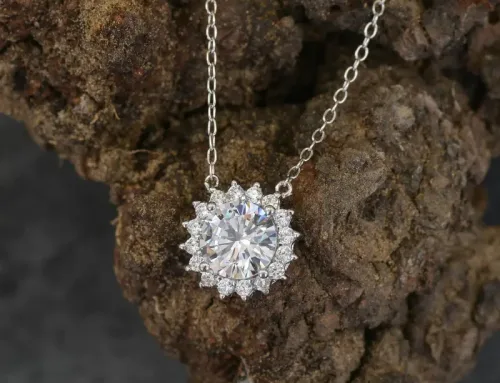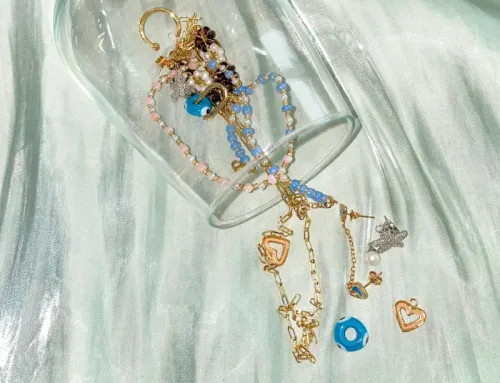Necklace Tangles?Simple Tips and Tricks
Anyone who has worn a necklace for any length of time knows that tangling is a common issue. Especially when worn in multiple layers or stored improperly, chains are prone to cross-linking and tangling. Whether it is wearing quickly, friction during activities, or being placed casually, the chains will become intricately entangled. The good news is, with a few simple tips, you can easily prevent your necklaces from getting tangled. Let’s take a look at some easy and practical ways to keep your jewelry tangle-free.
1. Store Your Necklaces Properly
One of the easiest ways to prevent your necklace from tangling is by storing it properly. Throwing it into a drawer or leaving it tangled up in a box will almost certainly lead to knots. Here are a few ways to store your necklace so it stays in good condition:
Use Jewelry Boxes or Pouches: When you store your necklace in a jewelry box with separate compartments or small pouches, it won’t get tangled up with other jewelry. By keeping each piece in its own little section, you’ll avoid the frustrating knots that can happen when chains cross over one another.
Hang Your Necklaces: A great option is to hang your necklaces on a jewelry stand or hook. This allows the chain to fall naturally, keeping it from twisting or tangling. You can find stands that hold multiple necklaces, so it’s a perfect solution for those who like to keep their jewelry on display.
Avoid Storing Them With Other Jewelry: If you store your necklaces along with other jewelry like bracelets or earrings, they will likely get tangled. It’s best to keep them separate, either in their own compartments or on their own hooks. The less friction and movement they experience, the less likely they are to become tangled.
2. Be Careful When Wearing Them
How you wear your necklace also plays a big role in whether or not it will get tangled. Simple changes to how you handle your necklace can go a long way in preventing knots:
Don’t Layer Too Many Necklaces of the Same Length: Layering necklaces is trendy, but when they are too similar in length, they tend to get caught on each other. If you love layering, try mixing different chain lengths and styles. This helps prevent them from tangling while also giving your outfit more variety.
Wear Your Necklace Gently: When putting on or taking off a necklace, avoid pulling or twisting it too roughly. The faster and more forcefully you handle it, the more likely it is to get twisted or knotted. Gently drape the necklace over your neck and let it settle naturally.
Take It Off When Not Needed: If you’re doing something active, like working out or sleeping, it’s a good idea to take off your necklace. During movement, chains can get caught on clothing or hair, leading to tangling. Plus, removing your necklace when it’s not needed will keep it from getting damaged over time.
3. Choose the Right Necklace Design
Sometimes, the design of the necklace itself can contribute to tangling. Poorly made or badly designed chains tend to tangle more easily. Here are some features to look for when choosing a necklace to minimize tangling:
Pick the Right Length: The length of your necklace matters. Long necklaces, especially those that don’t have a clasp to secure them, are more likely to get tangled. Likewise, very short necklaces might get caught on clothing or other jewelry. It’s best to choose a length that works with your style but also prevents the chain from crossing over itself too easily.
Look for Anti-Tangle Features: Some necklaces come with small beads or pendants built into the chain. These additions not only add to the necklace’s style but also help prevent tangling by making the chain more balanced. When there are small distractions like beads, the chain is less likely to twist and knot around itself.
Opt for Smooth Links: Chains with smooth, round links are less likely to tangle compared to those with jagged or angular links. When choosing a necklace, look for chains that have a more polished, smooth design. These types of chains tend to move more freely and won’t catch as easily, reducing the chance of tangling.
4. Maintain Your Necklace Regularly
Regular maintenance can also help keep your necklace in good shape and prevent tangling. A little bit of care and attention goes a long way in ensuring your jewelry stays tangle-free:
Check for Damage: Over time, necklaces can wear down. Links may start to loosen, clasps may break, or chains may get scratched. A damaged necklace is more likely to get caught on other items, leading to tangles. Inspect your necklace regularly to make sure everything is in good shape. If you spot any issues, repair them before they cause more damage.
Clean Your Necklace Often: Dust, oil, and dirt can build up on necklaces, making them more likely to get stuck or tangled. Gently clean your necklace with a soft cloth to remove any buildup. Cleaning your necklace regularly not only helps prevent tangling but also keeps it looking shiny and new.
Store It Properly Between Uses: Even if you don’t wear your necklace every day, make sure you store it properly. Never just throw it into a bag or drawer. Take a few extra moments to store it in a pouch or hang it up. This little effort will pay off by keeping the chain from becoming tangled when you need it again.
Conclusion
Necklace tangles don’t have to be a constant headache. By following a few simple tips—like storing your necklace properly, handling it gently, choosing the right design, and maintaining it regularly—you can keep your jewelry in top condition and tangle-free. The small changes you make today can ensure that your necklace lasts longer, stays in better shape, and remains easy to wear without those frustrating knots. With just a bit of care and attention, your necklaces will always be ready to wear, no tangles involved.

